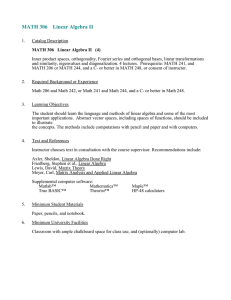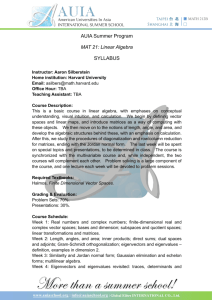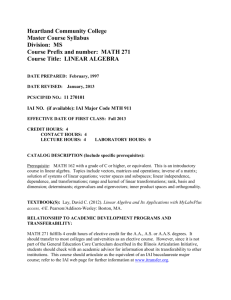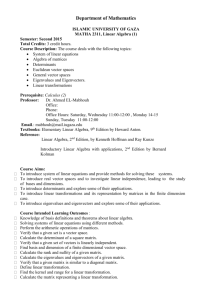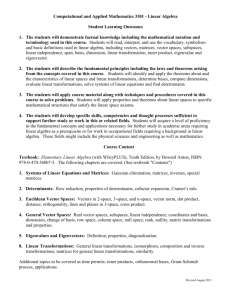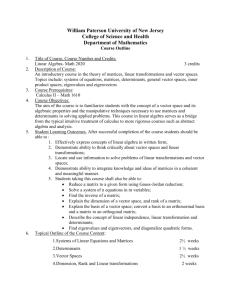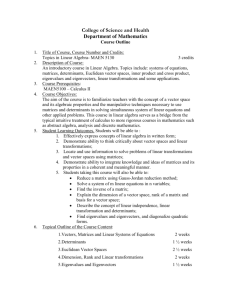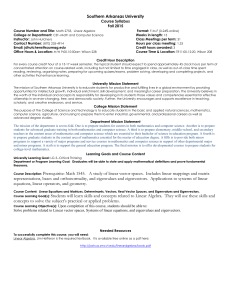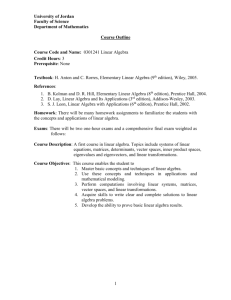MATH 306 Linear Algebra II
advertisement
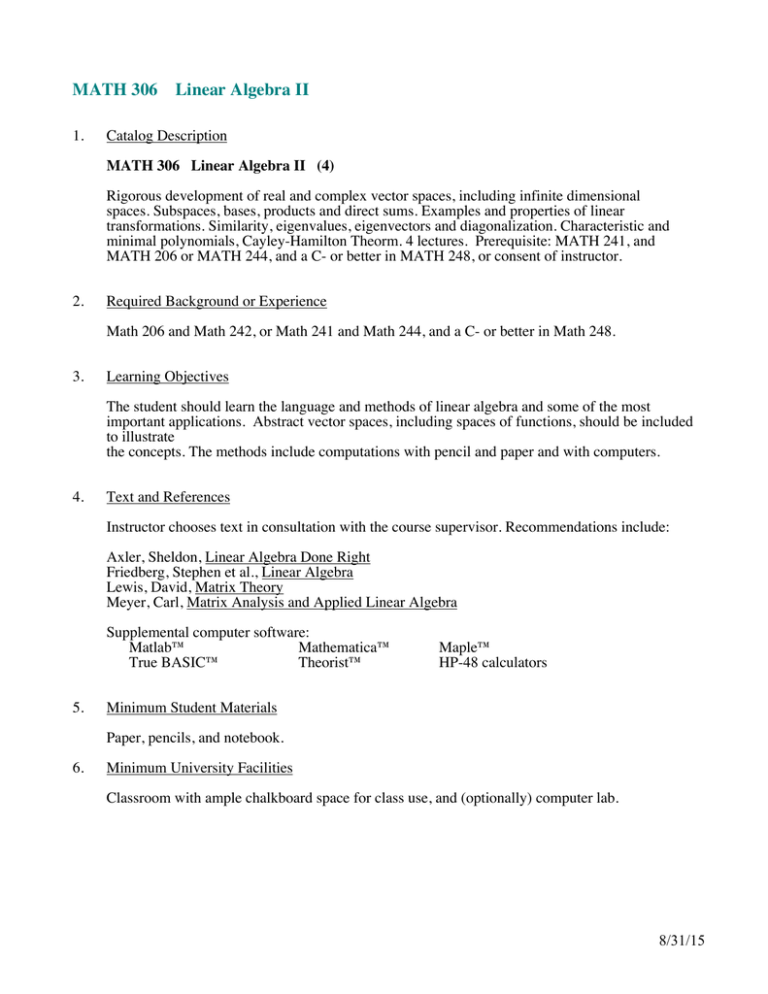
MATH 306 1. Linear Algebra II Catalog Description MATH 306 Linear Algebra II (4) Rigorous development of real and complex vector spaces, including infinite dimensional spaces. Subspaces, bases, products and direct sums. Examples and properties of linear transformations. Similarity, eigenvalues, eigenvectors and diagonalization. Characteristic and minimal polynomials, Cayley-Hamilton Theorm. 4 lectures. Prerequisite: MATH 241, and MATH 206 or MATH 244, and a C- or better in MATH 248, or consent of instructor. 2. Required Background or Experience Math 206 and Math 242, or Math 241 and Math 244, and a C- or better in Math 248. 3. Learning Objectives The student should learn the language and methods of linear algebra and some of the most important applications. Abstract vector spaces, including spaces of functions, should be included to illustrate the concepts. The methods include computations with pencil and paper and with computers. 4. Text and References Instructor chooses text in consultation with the course supervisor. Recommendations include: Axler, Sheldon, Linear Algebra Done Right Friedberg, Stephen et al., Linear Algebra Lewis, David, Matrix Theory Meyer, Carl, Matrix Analysis and Applied Linear Algebra Supplemental computer software: Matlab™ Mathematica™ True BASIC™ Theorist™ 5. Maple™ HP-48 calculators Minimum Student Materials Paper, pencils, and notebook. 6. Minimum University Facilities Classroom with ample chalkboard space for class use, and (optionally) computer lab. 8/31/15 Math 306, page 2. 7. Content and Method Have students review Gaussian Elimination and other computational techniques on their own. Vector spaces: include abstract definition, spaces of functions, spaces of linear transformations, and Rn Subspaces, linear independence, bases, and sums of subspaces (in abstract vector spaces) Linear transformations and matrices on abstract vector spaces. Determinants (brief review in more rigorous context than in Math 206) Eigenvalues and eigenvectors of linear transformations Diagonalization Re-emphasize the concept and precise definition of a function and give specific examples within the context of this particular course Some suggested chapter outlines to follow for Math 306 are: Using Axler, cover Chapters 1-5. You may need to skip some sub-sections to get through Chapter 6. Using Friedberg, Insel, and Spence, cover Chapters 1, 2, 4, 5, and possibly 6.1 and 6.2. Most of the topics in Chapter 3 are repeated from Math 206, so only changes in notation and enough material to illustrate additional abstraction should be covered. 8. Methods of Assessment Assigned problem sets, scheduled examinations, and (possibly) computer projects. 8/31/15
